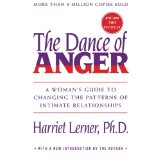 Anger – I don’t like it! I don’t know what to do with it! I don’t want it in my life!
Anger – I don’t like it! I don’t know what to do with it! I don’t want it in my life!
In my last blog entitled, “Do you have an Anger Problem,” I listed a series of questions that can help identify an anger problem.
If you think you have a problem with anger, don’t be afraid of it. Recognize the symptoms and redirect the energy to finding solutions.
What should I do if I have a problem with anger?
- First, go over the list of symptoms in last week’s blog. Do you see yourself there? If you think anger may be a problem for you, admit that possibility and take the next step.
- Keep a dairy for at least a week. Mark down every time you get angry. What triggered your anger? What did you say to yourself? What other feelings were you experiencing? What was the first action you took after your anger was triggered? Did it resolve the problem or conflict? Did your response to this situation help or hurt you?
- There are thoughts and long held beliefs attached to our responses to events. It isn’t the events themselves that cause our emotional reaction; it’s our interpretation of those events – what they mean to me. Sometimes those meanings come from long-held grievances that when examined are hurting me. Make a conscious decision to let go of them. We can challenge our thinking and expand or alter our interpretation.
- After you have kept a record for a week or so a pattern will emerge. Has your anger become a habit? Is it just an easy way to deal with irritations? Are you using your anger to protect that “younger self” that was wounded when you had no way to defend or protect yourself? We can use our anger to become assertive without attacking or hurting the rights of another.
An anger problem not only hurts us, but those around us: our spouses, partners, children, relationships, colleagues, etc. Whether acting passive-aggressively or aggressively, others are affected.
Remember that even if we don’t physically attack someone, the words we use not only hurt but injure the spirit and psyche of others. They are weapons that inflict deep wounds that can last a lifetime!
If your own wounding triggers ongoing, unnecessary anger, consider getting professional help.
Next month’s blogs will have a focus on conflict resolution and becoming assertive. Remember: when you are angry, you are trying to fill some need. We can do that without attacking and defending.
If you find yourself getting angry in any situation, step back. Take some deep, slowing breathes. Count to ten or even twenty if necessary. Ask for a time out if anger levels are rising when in a heated argument.
Go for a run or walk around the block. As your anger levels lower, think about what you want and how to ask for it while listening and considering the needs of others as well.
My blogs next month will continue on this series of unspoken stress and will focus on how to deal with anger in others, becoming assertive and negotiating conflicts in our relationships.
For more information on turning your distress into productive stress, my book, Use Stress to Meet Your Goals: 12 Steps to Understanding Stress and Turning it Into a Positive Force, with MP3 recording of each chapter is available on my website for only $19.95.
Marlene Anderson








 Anger is an emotion and like all emotions, it has a purpose.
Anger is an emotion and like all emotions, it has a purpose.

